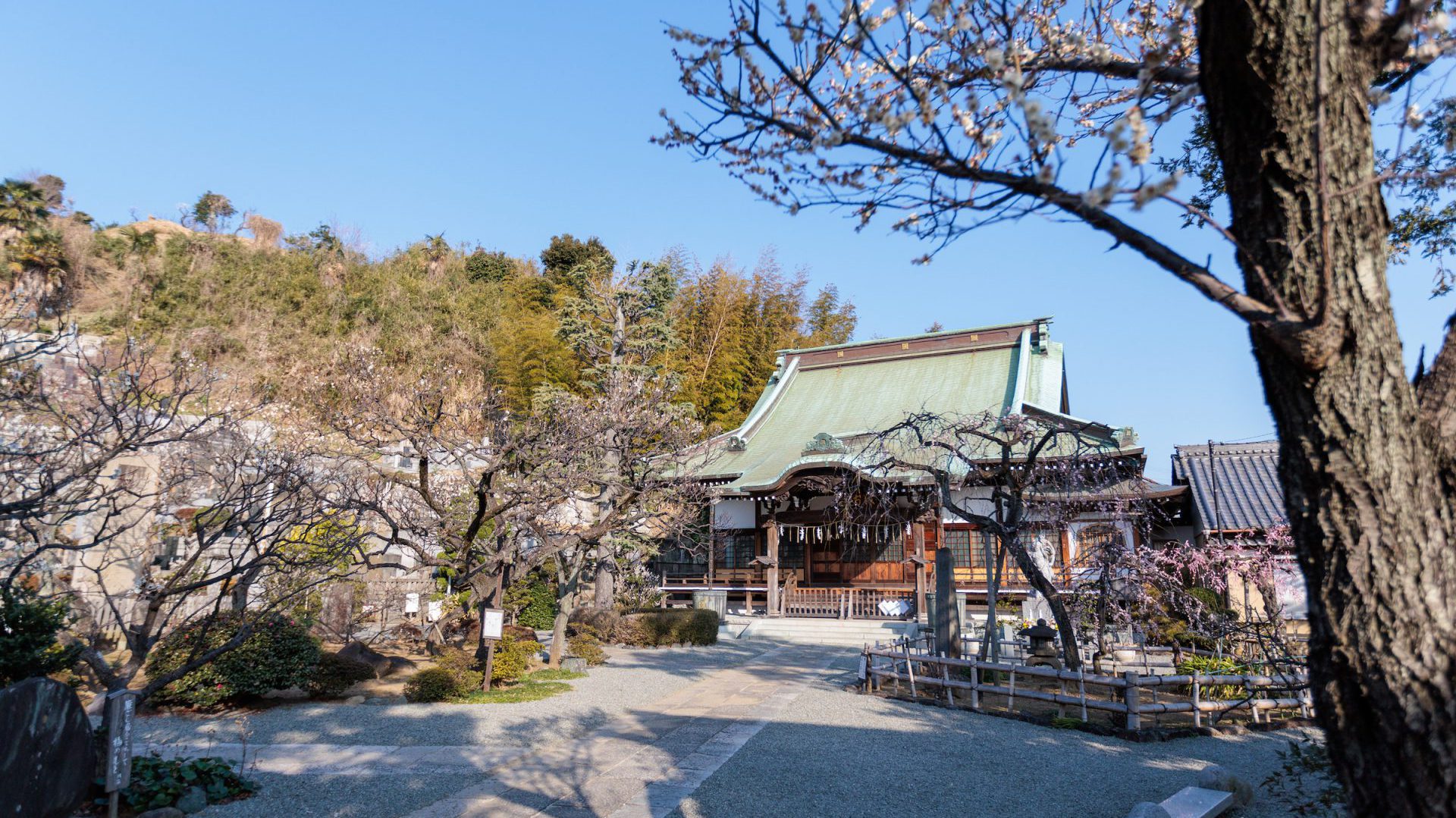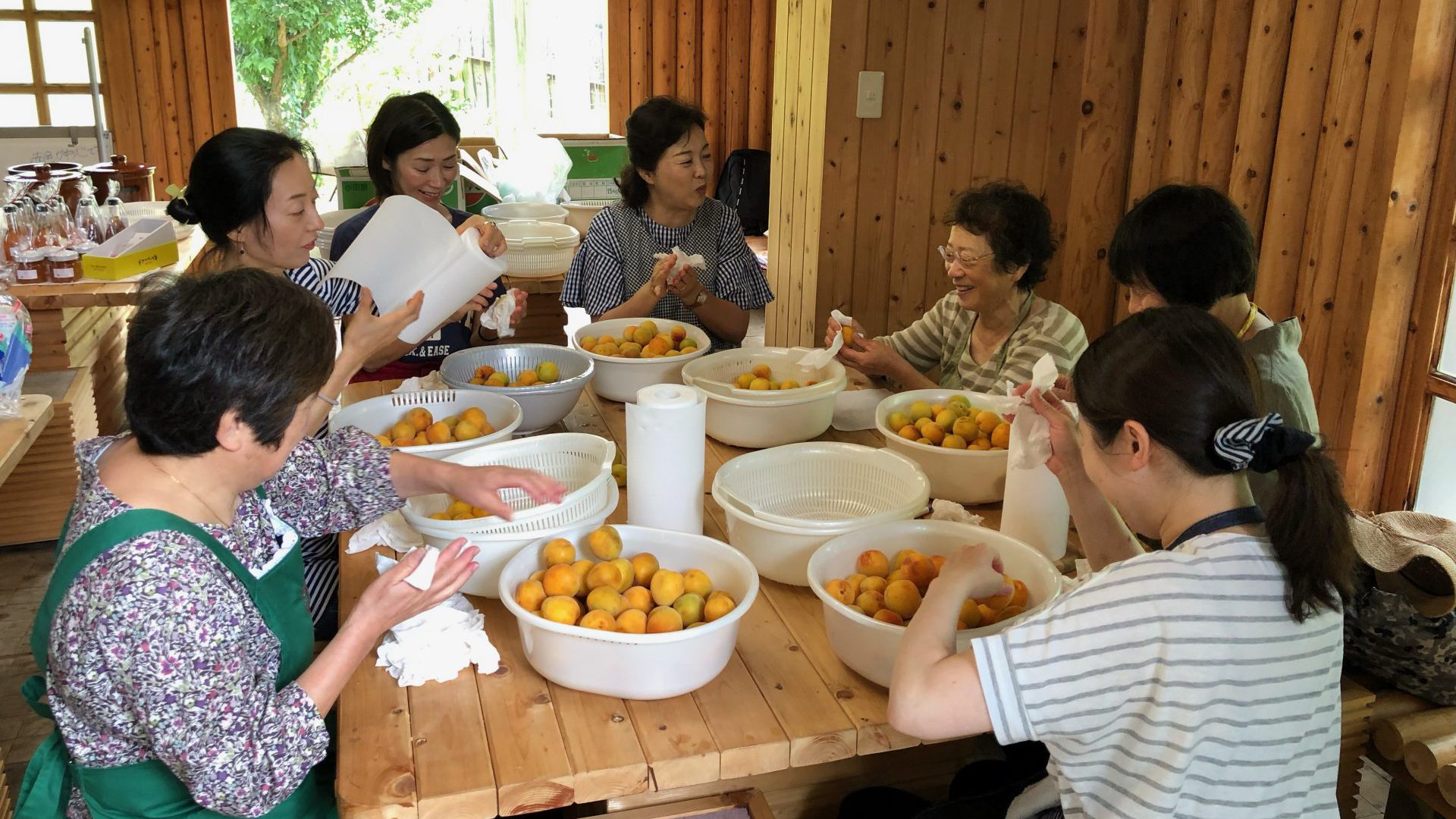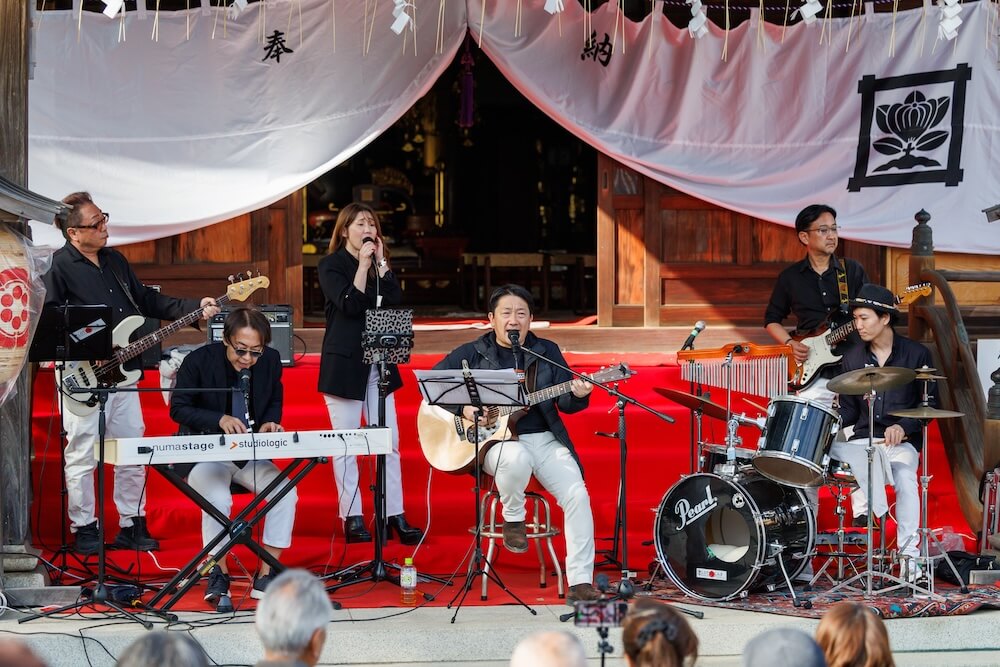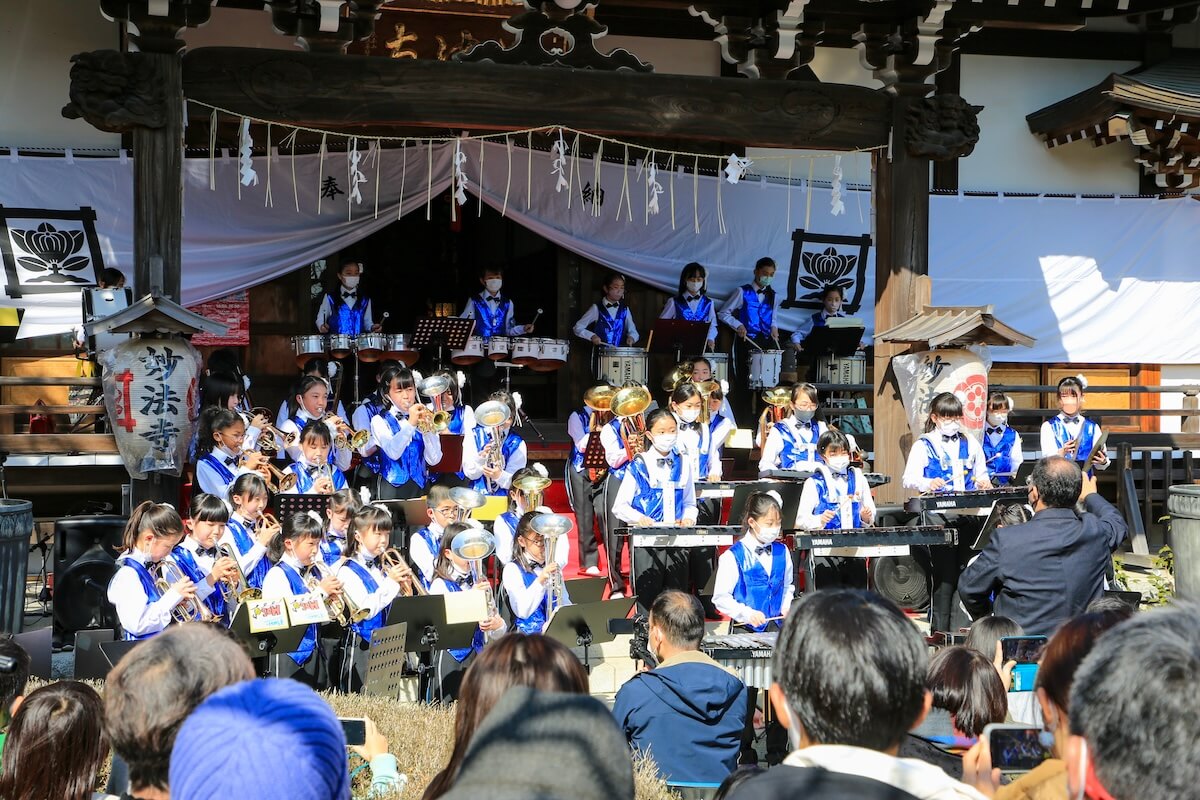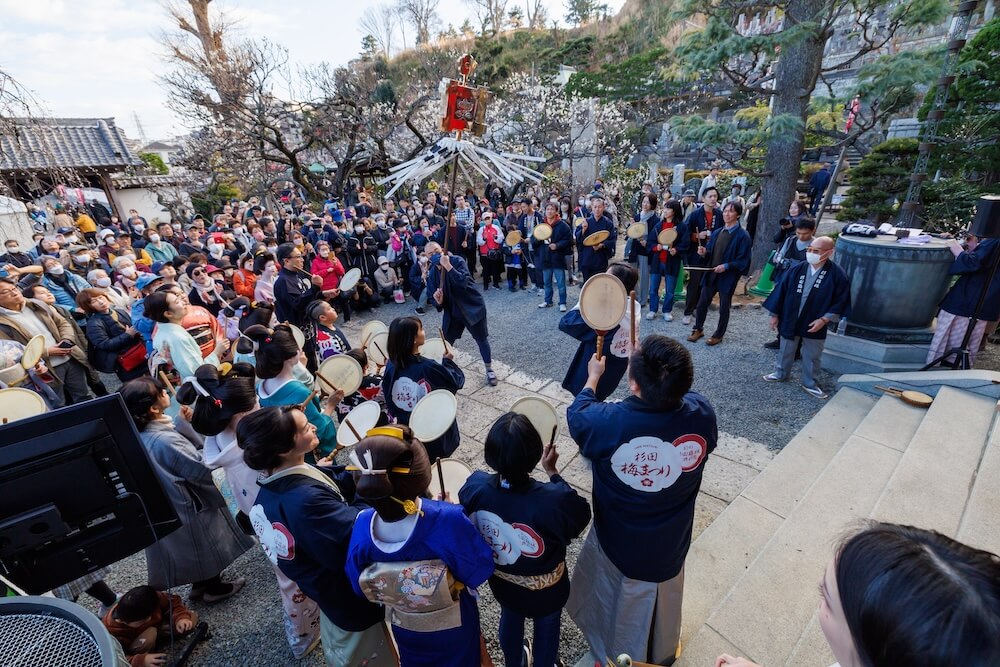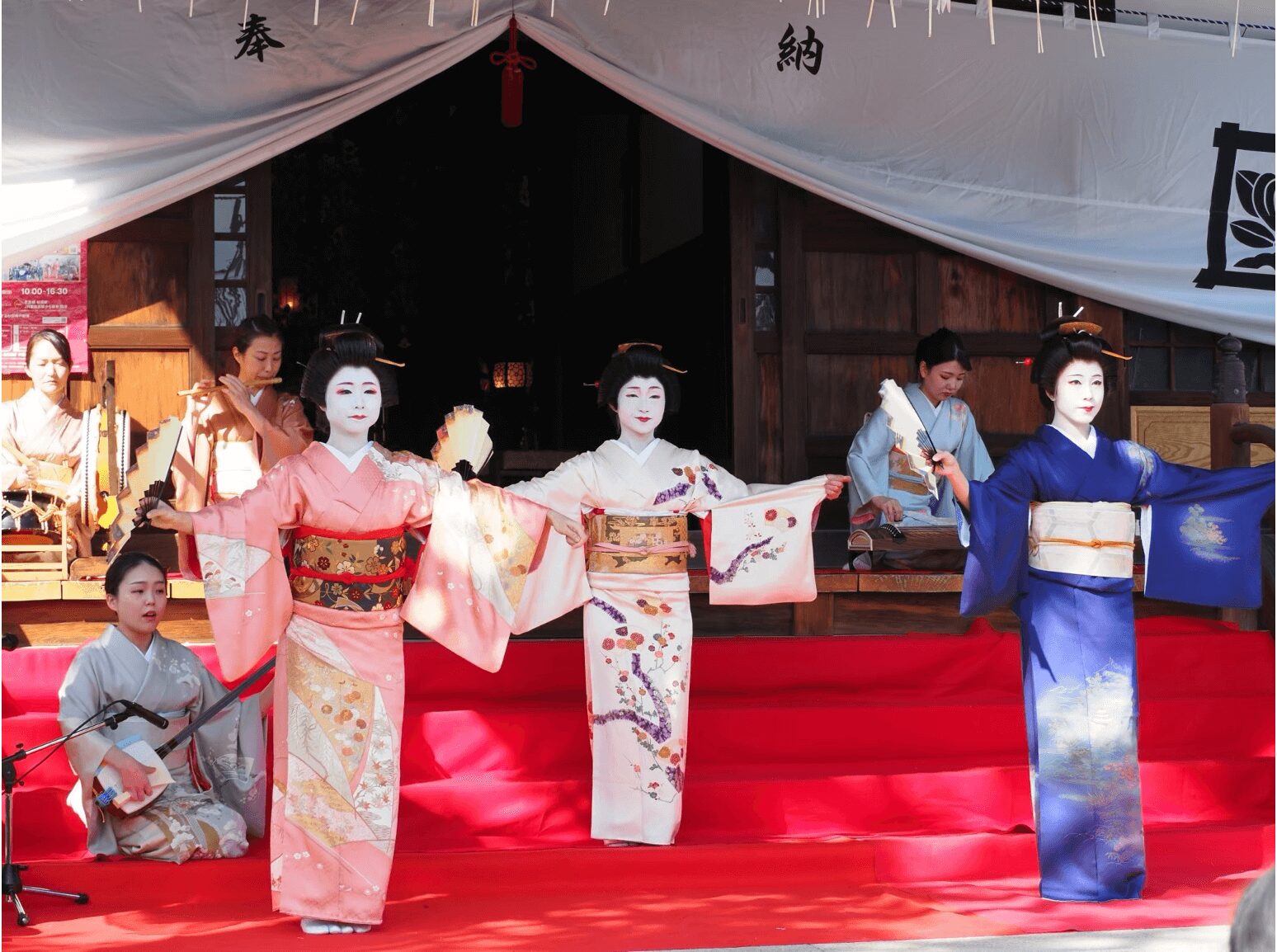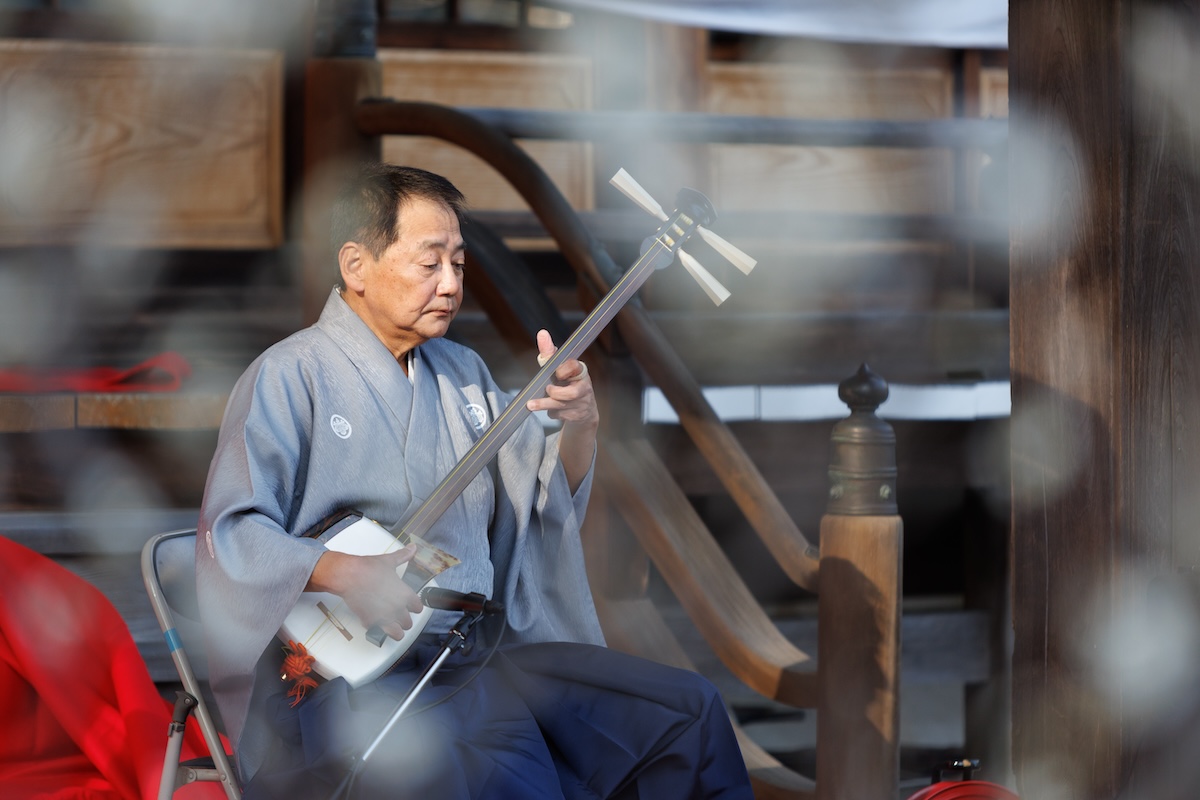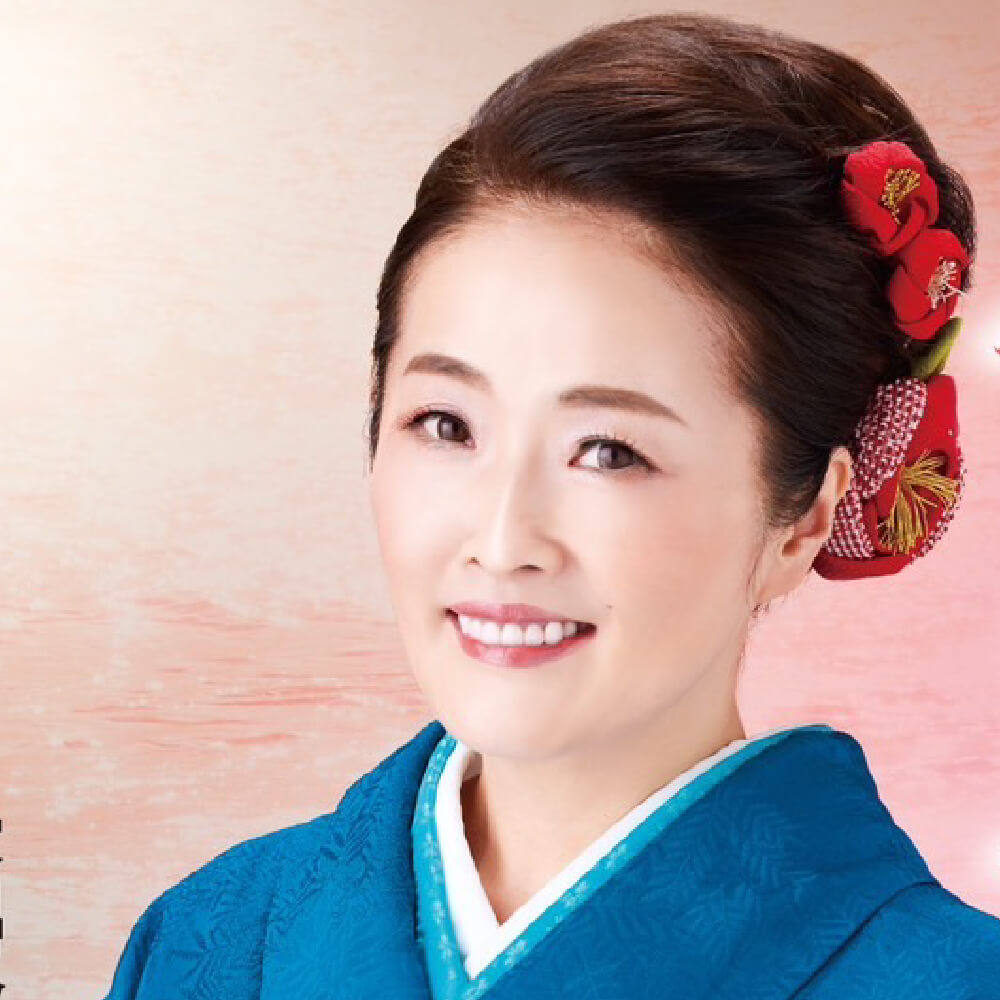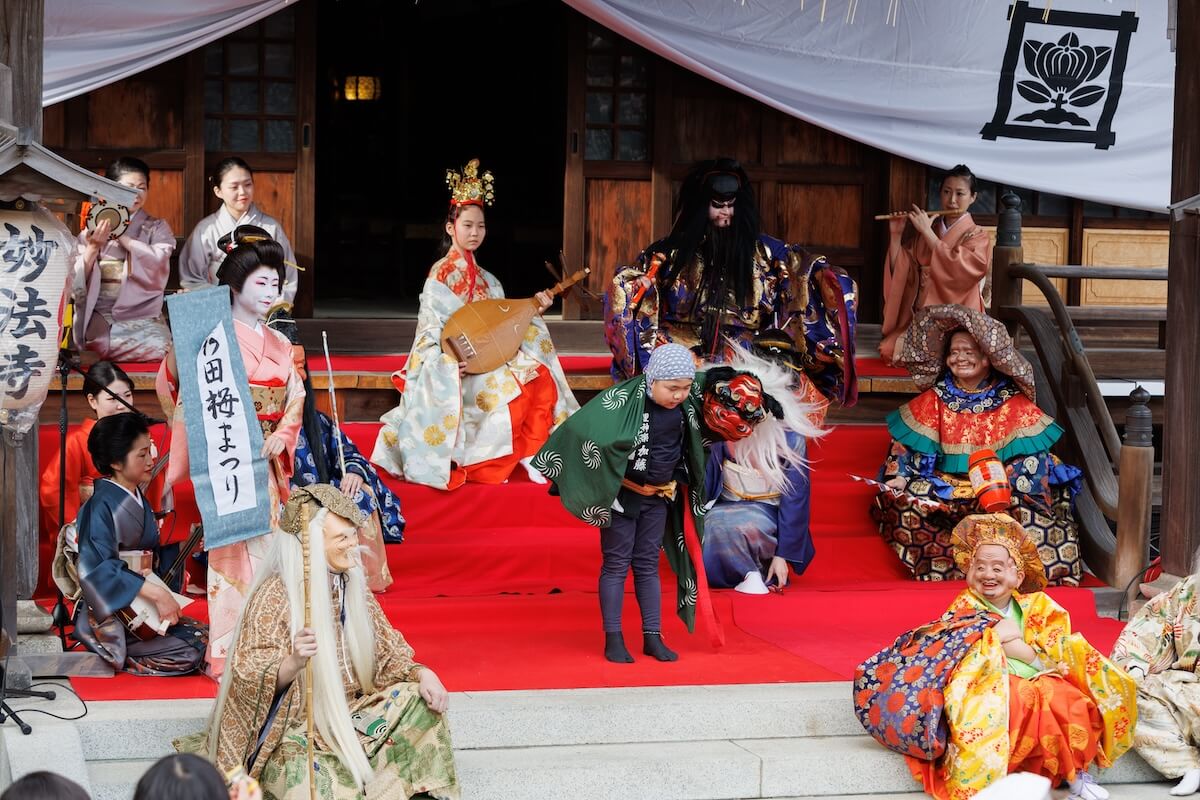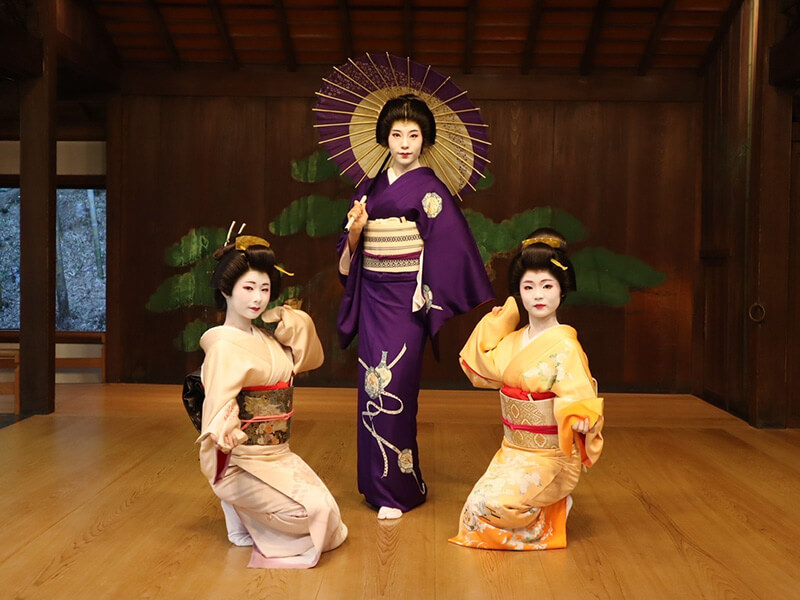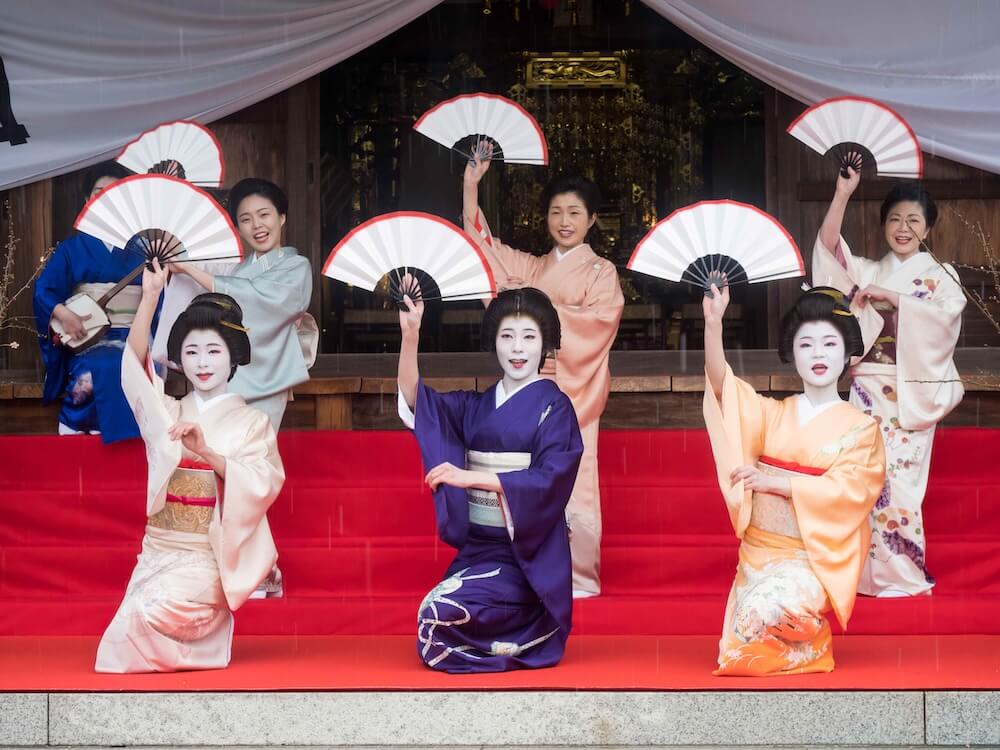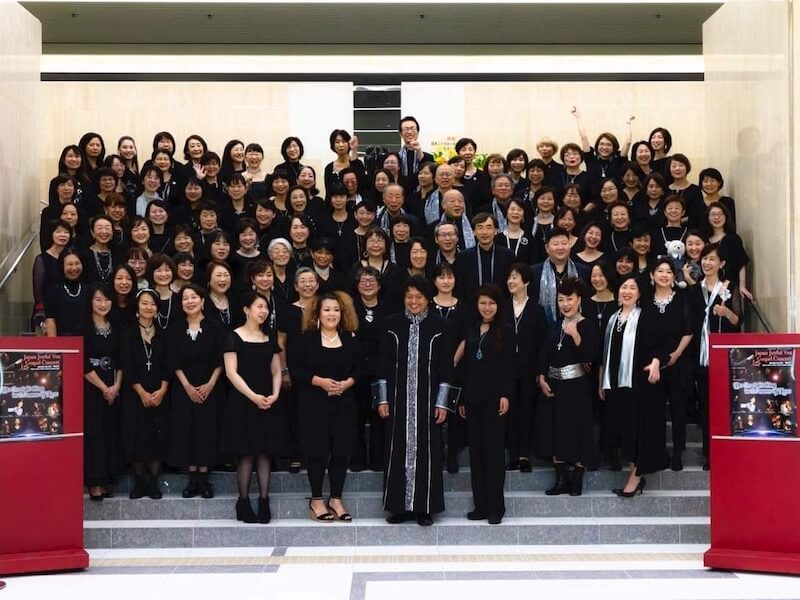The allure and seasons of Sugita Plums
Known for high citric acid concentration, they’re additive-free and highly effective
Plum blossoms can be enjoyed in winter, and the plums themselves can be enjoyed all year round in processed goods when they are picked and processed in summer. We admire our magnificent predecessors’ wisdom who skillfully used Japan’s seasons in this way. In addition, plums have been scientifically proven to be an anti-oxidant, an antibacterial, to regulate intestinal functioning, and to assist in recovering from fatigue, among other things. What makes Sugita Plums so great is, since they have a particularly high citric acid concentration, Sugita Plum food products made without any food additives last that much longer.
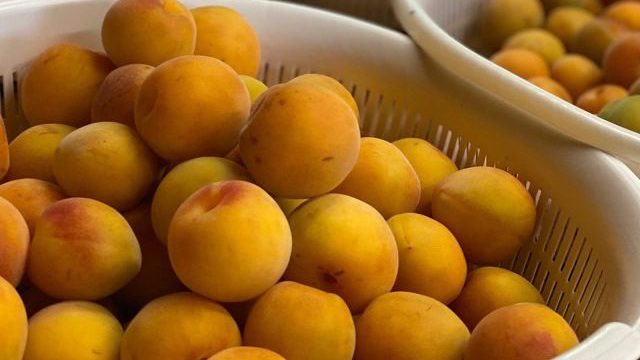
Sugita Plum Fruit
Sugita Plums are a precious native variety of plums from ancient Japan that was never crossbred, that originated in Sugita, Isogo Ward, Yokohama. They are known for their large size, high citric acid concentration, and powerful tartness. In addition, even though the fruit is high in fiber, it is tender. The fully ripened fruit has an extremely good smell, making them perfect for umeboshi, plum wine, or plum juice.

Sugita Plum Blossoms
The blossoms are completely white with five petals. They come into bloom in early February, and are known for their extremely fine aroma. The white blossoms that bloom here and there in the cold winter are a beautiful sight that resembles the fluttering of snowflakes. The artist Utagawa Hiroshige put them in his Ukiyo-e works.
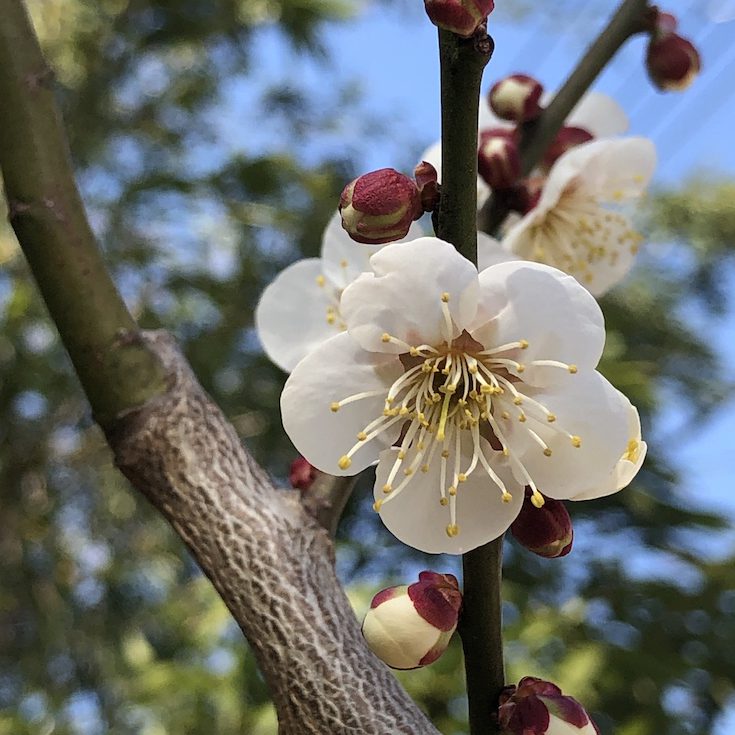
How to select delicious plums

Plums for
making umeboshi
Use fully ripened Sugita Plums. Green or yellow plums are not suitable. The best plums are those that fully ripened on the tree. Yellow plums were forced to ripen at room temperature.
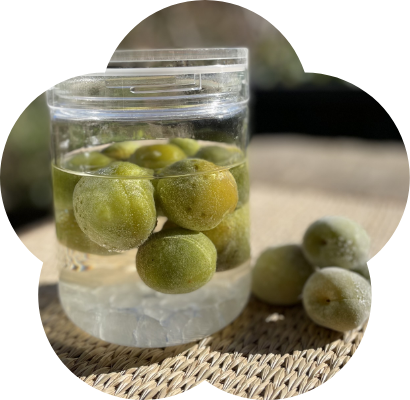
Plums for
making plum wine or plum juice
Use Sugita Green Plums or Sugita Yellow Plums. Green plums give a lighter flavor, while yellow plums give a richer flavor.

Plums for
making plum jam
Plums that are too soft to use for umeboshi. Freeze fully ripened Sugita Plums with damaged skin or spots before using them.
The history of Sugita Plums
Starting as a preserved food, it became the Kanto region’s number-one plum grove
Sugita (present day Isogo Ward, Yokohama) used to have very poor soil which was unsuitable for growing grains or vegetables. In the Tensho period (1573-1592), the Lord of Sugita, Mamiya Nobushige, planted plum trees which were suited to the temperate land and created plum groves. The plums were then processed into umeboshi to be used as preserved food for use by the military in the field. In the Edo period, the plum groves of Sugita had grown to over 35,000 trees in size and had gained quite a reputation throughout Japan. They were the number-one plum groves in the Kanto region that tourists came from all over to view the plum blossoms. Later, the plum groves of Sugita disappeared over time, and the Sugita Plums have become known as the “Mythical Plums.”
Revived by a fan, working to popularize them
However, in a corner of the large Soga Plum Grove in Odawara, Kanagawa Prefecture, Sugita Plums were discovered to exist. Fans of the plums in their hometown of Sugita revived them and are working to popularize them.
In front of the Sanmon gate at Myohoji Temple there is still an old Sugita Plum tree from olden times. On the hill behind it, 100 saplings of grafted Sugita Plums have been planted, and we look forward to seeing them grow. Umeboshi made from Sugita Plums were selected as the 2019 “Isogo Masterpiece,” and was used in 2020 as one of Yokohama’s hometown tax products.
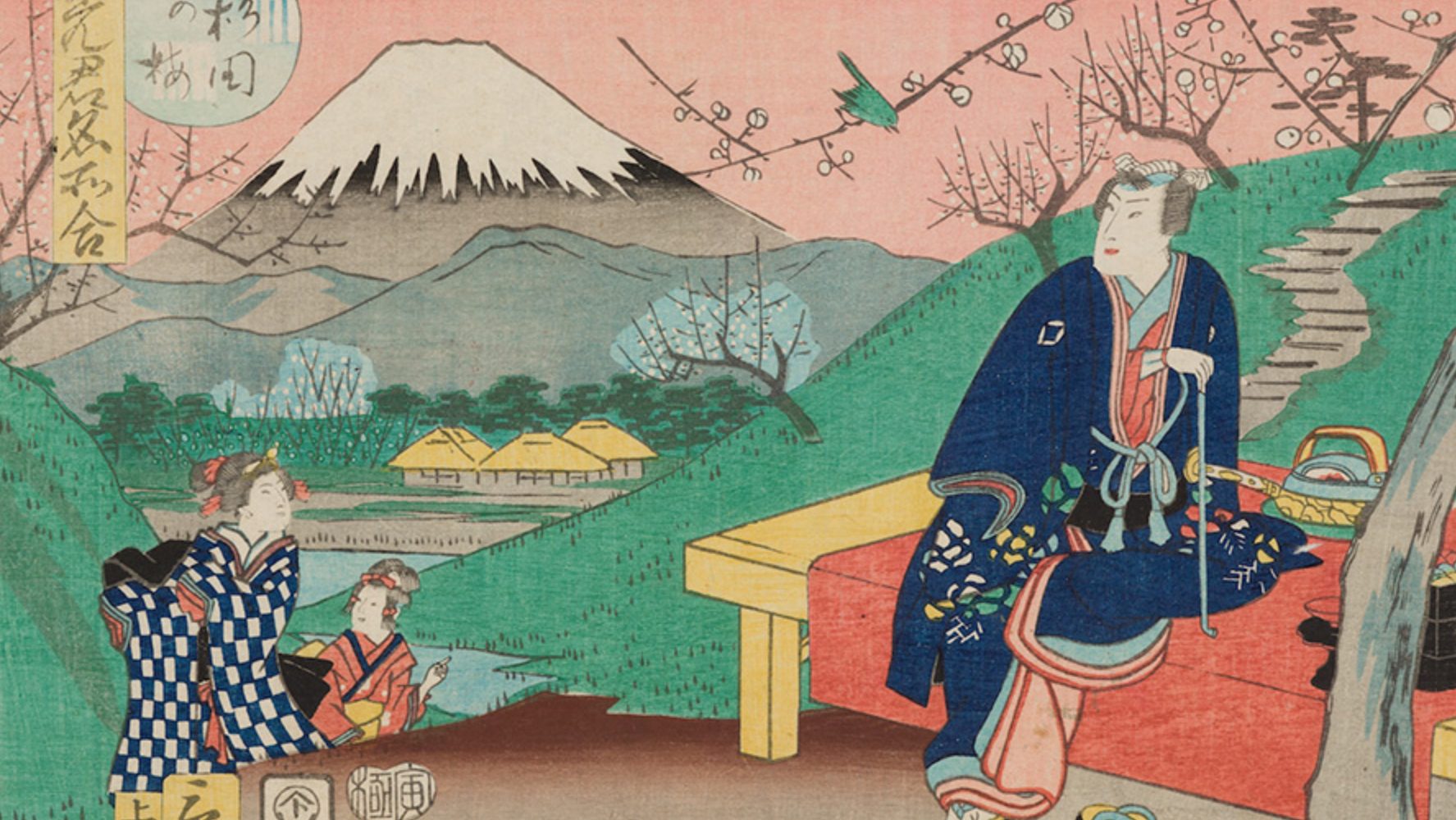
(Source: Kanagawa Prefectural Museum of History)
